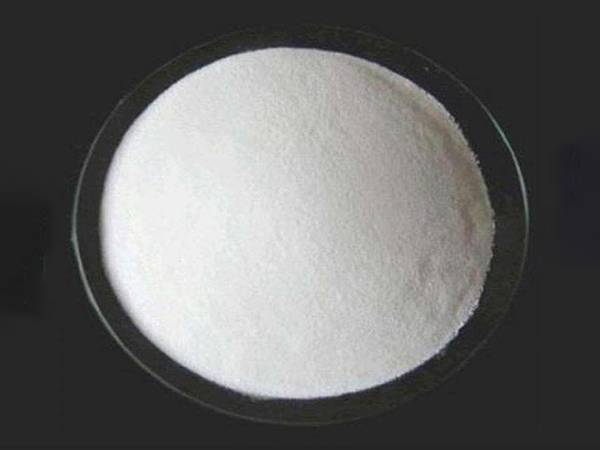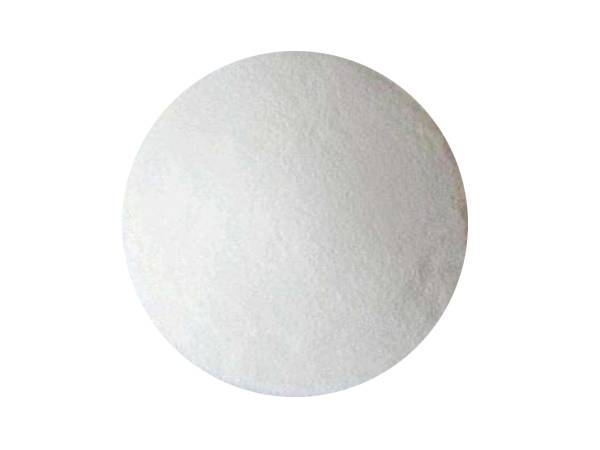



High Purity Potassium Persulphate 7727-21-1 | Reliable Supplier
Potassium persulphate (K2S2O8, CAS: 7727-21-1) is a powerful inorganic oxidizing agent with wide usage across the chemical industry, environmental treatment, electronics, polymerization, and metallurgy. With increased demand for high-purity initiators, potassium persulphate (also referred to as potasium persulphate) showcases technical advantages in initiation efficiency, storage stability, and environmental performance.
Learn more or inquire:
Potassium persulphate by Fizachem
1. Industry Overview & Trends
The potassium persulphate market exhibits a steady CAGR of 4.5% from 2020-2027, driven by rapid expansion in electronics etching, polymerization initiators, water treatment, pulp & paper bleaching. Main global producers are concentrated in China, Japan, and Europe.
| Region | Key Producer | Market Share | Production Capacity (MT/year) |
|---|---|---|---|
| China | Fizachem, United Initiators | ~48% | 31,000 |
| Japan | PeroxyChem, Adeka | ~16% | 8,500 |
| Europe | MGC, Persulfates Europe GmbH | ~28% | 16,300 |
| Others | Niche Manufacturers | ~8% | 4,800 |

2. Technical Specification & Industry Standards
Below is a technical data summary according to latest potassium persulphate SDS (Safety Data Sheet) and producer certificates (ISO 9001:2015, REACH, RoHS). This standardization ensures consistency and safety for all applications.
| Parameter | Value (Industrial Grade) | Value (High Purity) | Test Method / Standard |
|---|---|---|---|
| Appearance | White crystalline powder | White crystalline powder | Visual Inspection, ISO 8213 |
| Assay (K2S2O8, %) | ≥ 99.0 | ≥ 99.5 | ISO 6353/3 |
| Chloride (Cl, %) | ≤ 0.02 | ≤ 0.005 | ISO 2488 |
| Moisture (%) | ≤ 0.10 | ≤ 0.05 | ISO 760 (Karl Fischer) |
| Iron (Fe, ppm) | ≤ 20 | ≤ 5 | ICP-OES, ISO 11885 |
| pH (5% solution) | ~4.0 | ~4.0 | ASTM D1293 |
| Decomposition temp, °C | ~100 | ~100 | DSC/ISO 11357 |
| Bulk density (g/l) | 700 - 900 | 700 - 900 | ISO 697 |
3. Manufacturing Process of Potassium Persulphate
Potassium Sulphate
Sulfuric Acid

Potassium Persulphate
Critical steps: 1) Selection of high-purity K2SO4 and acid; 2) Use of platinum for electrode stability; 3) Precise current, temperature, and cooling control; 4) Multi-stage crystallization and vacuum drying
4. Technology Advantages of Potassium Persulphate

Material Features & Manufacturing Quality
- Oxidizing Power: Persulfate anion (S2O82−) has a redox potential of +2.1 V, much higher than peroxides or ozone.
- Inert towards Most Organics: Ensures low undesired side reactions in polymerization and etching.
- Corrosion Resistance: Stable in sealed, dry storage; packaged in anti-UV HDPE drums (potassium persulphate SDS specification).
- High Reactivity, Low Residue: Complete decomposition yields harmless sulfate ions (environment-friendly).
- Long Shelf Life: ≥ 24 months under ISO/ASTM tested packaging, moisture
- Certified Quality: Every batch meets REACH, RoHS, and ISO 9001 certification.
Chemical & Physical Parameters Comparison
5. Application Scenarios & Case Studies
| Industry | Application Type | Typical Dosage (g/L) | Effect/Advantage |
|---|---|---|---|
| Polymer Manufacturing | Polymerization initiator (latex, acrylics, SBR) | 1-3 | High conversion, low odor, pure end product |
| Electronics | Micro-etching, PCB cleaning | 10-15 | Uniform copper removal, residue-free |
| Environmental Remediation | In situ chemical oxidation (ISCO) | 25-40 | Destroys organic pollutants, nitrate-free |
| Textiles | Desizing, bleaching | 2-4 | Bright white finish, mild on fabric |
| Mining/Metallurgy | Ore flotation, gold leaching | 2-8 | Selective oxidation, residue control |
Case Example: PCB Manufacturer — Application of Potassium Persulphate
Background: A leading printed circuit board (PCB) manufacturer in Taiwan faced issues with inconsistent etching and copper residue.
Solution: Switched to high-purity potassium persulphate supplied by Fizachem, supported by ISO 9001-compliant technical training.
Result: Achieved >98.5% process yield, reduced copper wastage by 23%, and met RoHS and REACH compliance.
6. Product Comparison Table
| Property | Potassium Persulphate | Ammonium Persulphate | Sodium Persulphate |
|---|---|---|---|
| Molecular Formula | K2S2O8 | (NH4)2S2O8 | Na2S2O8 |
| Molecular Weight | 270.32 | 228.20 | 238.11 |
| Solubility (g/100mL, 20°C) | 4.7 | 8.0 | 54.0 |
| Initial Decomp. Temp (°C) | 100 | 120 | 80 |
| Common Application | Electronics, Latex | Polymerization, Bleaching | Cleaning, Soil Remediation |
| Typical Residue | K+ | NH4+ | Na+ |
| ISO Compliance | ISO 9001, ISO 14001 | ISO 9001 | ISO 9001 |
7. Customization & Delivery (Fizachem)
- Package options: 1kg, 10kg, 25kg HDPE drums, 1200kg IBCs, moisture-protected bags (per potassium persulphate SDS & international shipping).
- Purity grades: 99.0%, 99.5%, 99.8% (electronics), food grade on request (ISO 22000/2018, FDA for food-processing aids).
- Specifications on request: Particle size, pH value, trace impurity control, customized drum labelling/barcoding.
- Lead Time: 7-14 days upon confirmation; urgent air express available.
- OEM/Private label available for global traders (custom documentation, REACH/IMDG MSDS issued).
- Warranty: 24 months from shipment; batch testing available on request.
- Support: 24/7 technical hotline, SDS/RoHS download, supply chain tracking.
8. Customer Experiences & EEAT (Expertise, Experience, Authority, Trustworthiness)
- Long-term clients: China Petrochemical, Sumitomo Chemicals, BASF Electronics, Taiwan PCB Group.
- Academic endorsement: Referenced in leading journals in SAGE – Journal of Hazardous Substances and ACS – Industrial & Engineering Chemistry.
- ISO, REACH, RoHS Certified: Annual audits by SGS/TÜV, batch traceability system compliant with FDA 21 CFR Part 11.
- Feedback: “Since deploying potassium persulphate from Fizachem, our SBR latex lines have seen a 14% throughput improvement and reduced rejection rates.” – Client, Top 3 Polymer Producer, 2023.
- Safety: All shipments with up-to-date potassium persulfate SDS, UN class coded, and globally accepted labelling.
9. FAQ: Potassium Persulphate Industry Terms & Technical FAQ
Frequently Asked Questions
-
Q1: What is the primary industry-standard for potassium persulphate quality?
A: ISO 8213/ISO 9001 and REACH compliance are mandatory for leading manufacturers. Customers should always request confirmation of batch traceability and certificate of analysis (COA) for every lot. -
Q2: Are there residue or corrosion issues when using potassium persulphate in electronics?
A: Potassium ion residues are much less aggressive than sodium or ammonium. With proper rinsing per potassium persulfate SDS, no conductive/corrosive issues occur on finished PCBs. -
Q3: Which packing is recommended for moisture-sensitive projects?
A: Double-layer HDPE drums with foil sealing or nitrogen-filled bags as per ASTM E104 (moisture less than 0.05%). -
Q4: How does potassium persulphate compare to ammonium persulphate for polymerization processes?
A: Potassium persulphate offers higher purity, lower ammonium contamination, and is preferable for high-transparency or low haze latex/PSA production. -
Q5: What are the typical shelf-life and recommended storage?
A: At 25°C and < 60% RH, sealed packaging, the shelf life is ≥24 months (ISO 11607-1 validated), provided no cross-contamination with organic matter. -
Q6: Is there special disposal procedure for potassium persulphate?
A: Follow national hazardous waste directive 91/689/EEC; neutralize with sodium bisulfite, then excess sulfate can be safely managed by regulated incineration or dilution. -
Q7: Can potassium persulphate be customized for ultra-high purity microelectronic use?
A: Yes, with impurity (Fe, Cl) ≤1 ppm, certified according to SEMI C78 specs for microelectronics, and batch-validated by ICP-OES.
10. Delivery, Warranty & Support
Lead time: Standard delivery within 7–12 business days. Rush orders available.
Warranty: Full replacement for standard compliance or transit damage within 24 months after shipment.
Support: 365-day technical consultation, emergency SDS download, video installation guides.
Contact: Potassium persulphate product page | inquiry@fizachem.com
11. References & Further Reading
-
Why Sodium Persulfate Is Everywhere NowNewsJul.07,2025
-
Why Polyacrylamide Is in High DemandNewsJul.07,2025
-
Understanding Paint Chemicals and Their ApplicationsNewsJul.07,2025
-
Smart Use Of Mining ChemicalsNewsJul.07,2025
-
Practical Uses of Potassium MonopersulfateNewsJul.07,2025
-
Agrochemicals In Real FarmingNewsJul.07,2025
-
Sodium Chlorite Hot UsesNewsJul.01,2025










